한식 읽기 좋은 날
Interview with Myoung-sook Kim, CEO of Korean Dessert Café Kimssibooin
This Month's HANSIK Talk
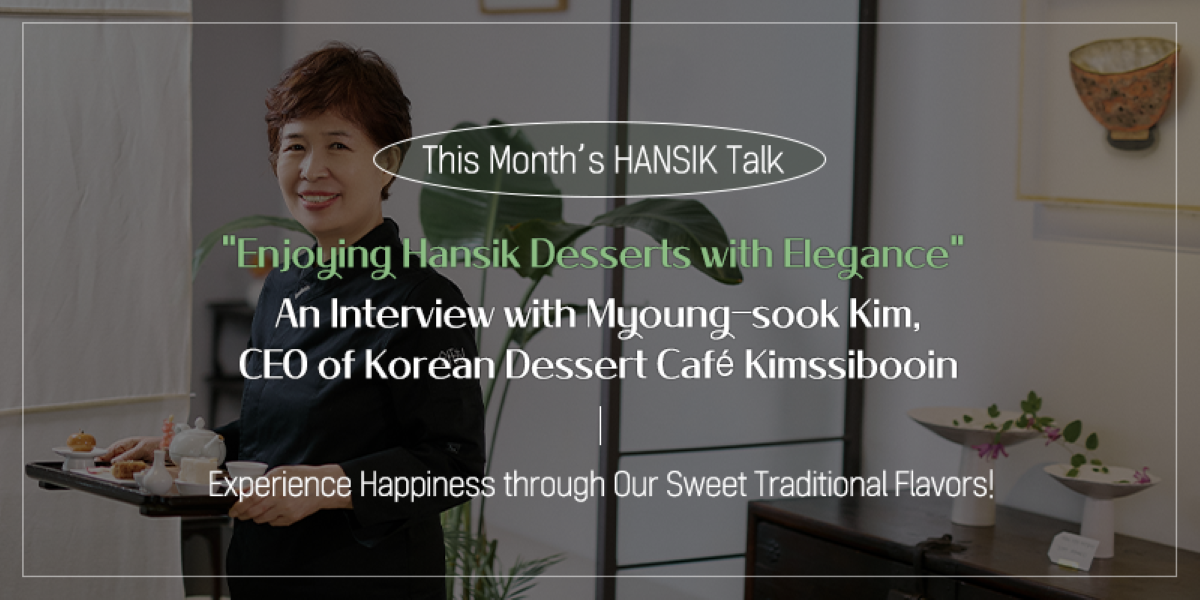
Fine dining restaurants we visit for special occasions prioritize quality over quantity, using the finest ingredients. In such places, it is unlikely that anyone would complain about small portions. This acknowledgment comes from recognizing the chef's efforts, time, premium ingredients, meticulous cooking, artistic plating, and every step taken to create the culinary masterpiece. Surprisingly, there are places that provide a fine dining experience not just with main courses but also with desserts. One in particular is the Korean dessert café Kimssibooin.

Love for the Family stays Forever Young
Kimssibooin wasn’t fancy, but possessed an elegant and graceful ambience. Myeong-suk Kim, the CEO of Kimssibooin, greeted us with a bright smile, and I could immediately sense the aura of a master. Typically, a 'master' refers to an expert who has dedicated his or her life to one specific field from young age. However, when CEO Kim embarked on her in-depth study of Korean desserts, she had already passed her mid-fifties, which was only about ten years ago.
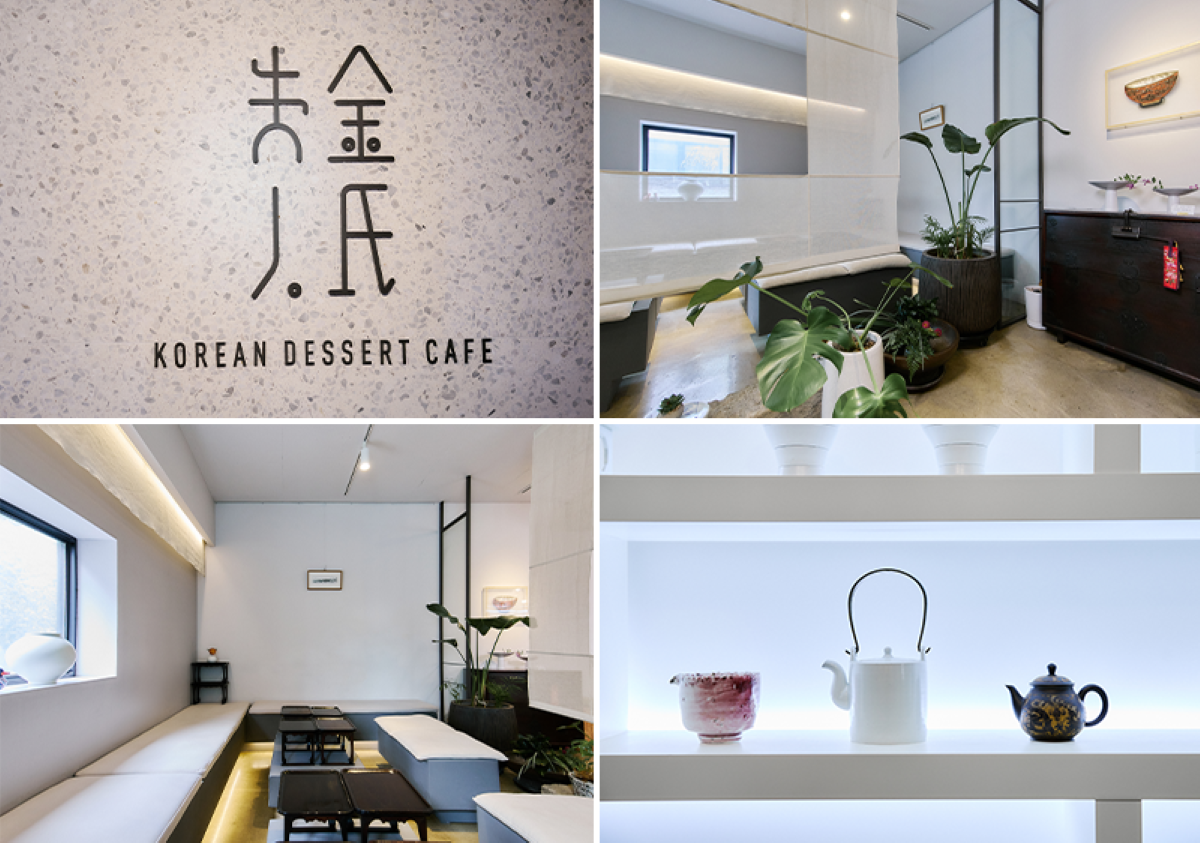
“As my family started to prefer bread and tteok (rice cake) over regular meals, I remembered how my mother used to make homemade tteok for the family when I was little. That memory inspired me to try making it myself, and that’s when I began learning at Master Sun-ja Choi’s ‘Korean Tteok and Hangwa Development Research Institute.’
“At that time, I never imagined I would end up running a cafe like this. My only desire was to make tteok for my family, just as my mother did, and as I was determined to achieve this goal, so the age factor naturally felt irrelevant. However, the further I delved into my studies, I came to realize the vast world of tteok, hangwa, and their related cultural elements such as pyebaek and ebaji (ceremonies part of the traditional Korean wedding) and this fueled my passion to continue learning. Then at one point, I was receiving requests to teach.”
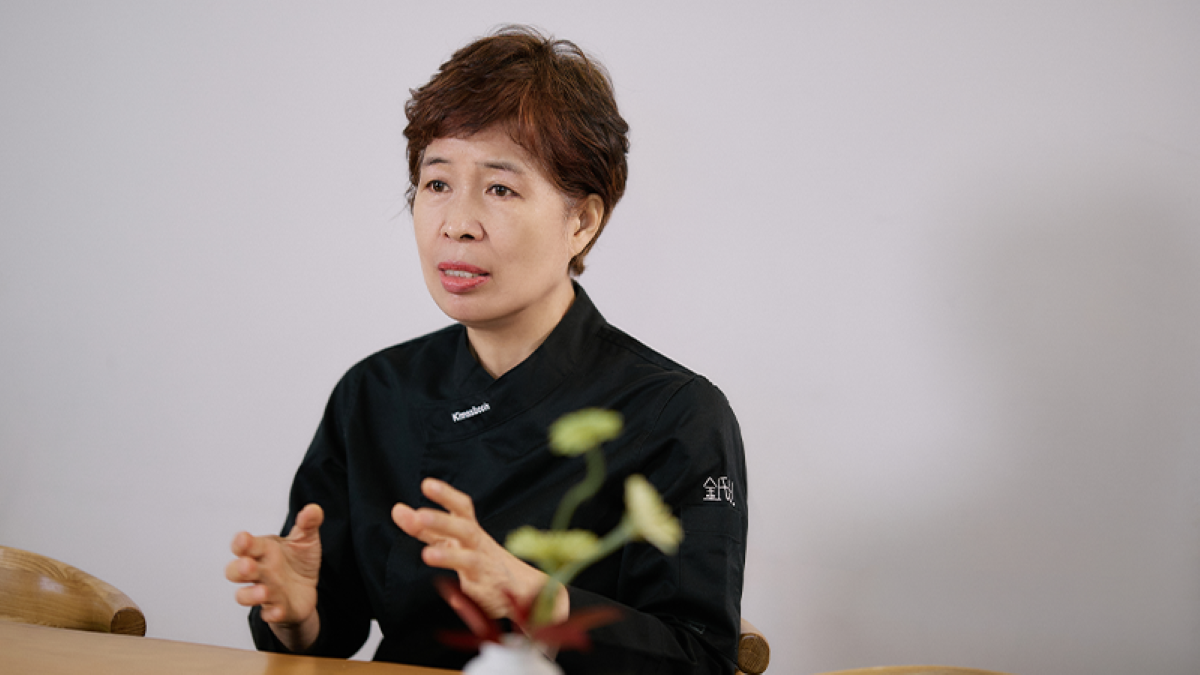
“I started by inviting friends over to my place and teaching them how to make traditional Korean treats like baekseolgi and yakgwa. However, the more I taught, the more I realized my own limitations. It became evident that I still had much to learn. I felt a strong desire to teach properly and thoroughly."
“I was so determined that I called Master Myeong-hwan Seo of 'Yeonhui Tteok Sarang,' with whom I had no acquaintance, and asked him to teach me after seeing his recipe. Looking back, I'm amazed at the courage I had. That’s how I began my journey again, starting from the basics, and spent six years progressing from a beginner to an expert and researcher.”

Fell in Love with Gaeseong Juak, the unique, cookie-like rice cake
Among the many traditional desserts, that captivated CEO Kim the most was the unique Gaeseong juak. When she thought she had tried all varieties of delicacies in life, Gaeseong juak offered a taste she had never experienced before. She couldn't help but wonder how she had lived without knowing such a delightful taste all her life.

“Until recently, Gaeseong juak was an unfamiliar name to the majority of people. I was saddened by the fact that while everyone knew what a macaroon was, Korean desserts remained obscure. I felt the urge to publicize this exquisite and savory delicacy to everyone.
“Gaeseong Juak is an old traditional delicacy of the Gaeseong region made by kneading a mixture of glutinous rice, non-glutinous rice, and flour into round shapes and then coating them with syrup made of malt, honey, cinnamon, and ginger. It resembles a donut shape and its sparkling appearance brings the recently trendy 'tanghulu’ to mind.”
One of Kimssibooin’s signature offerings is a beautifully arranged dessert table featuring an assortment of traditional desserts. The selection slightly changes according to the season, but Gaeseung juak is always included. Since the texture of Gaeseong juak deteriorates over time, Kimssibooin adheres to the ‘same day production and sale’ principal in order to deliver its authentic flavor.
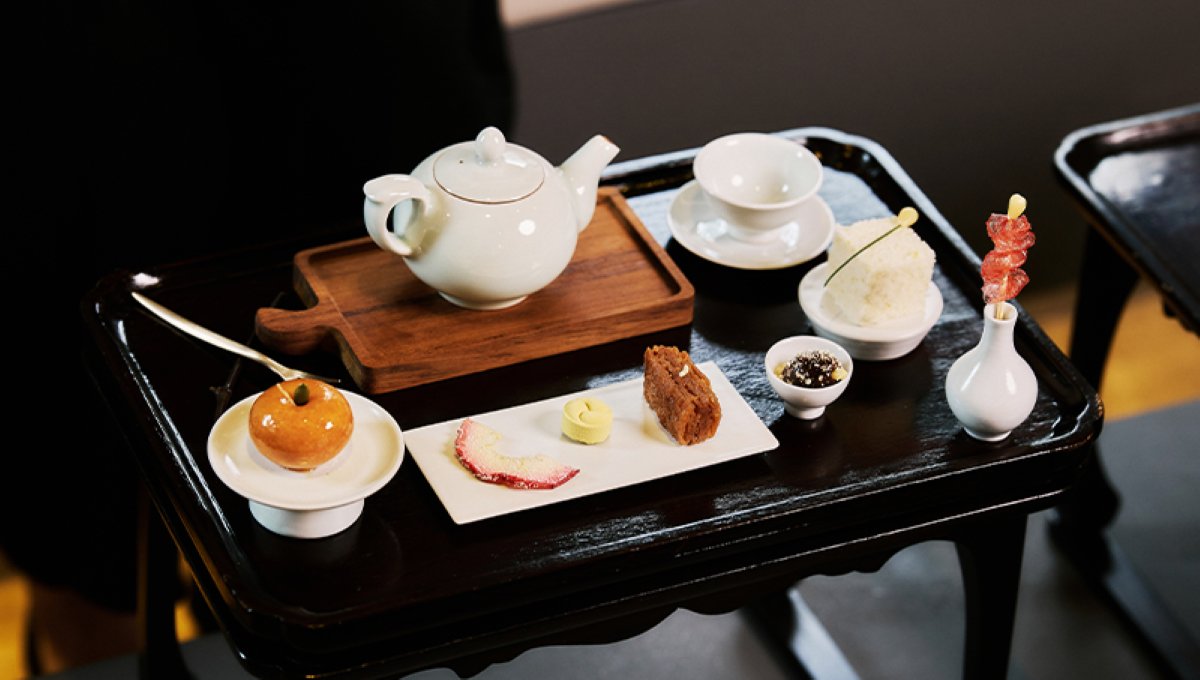

Elegant, Sophisticated, and Graceful Korean Desserts
For this autumn season’s Kimssibooin dessert table, green tea brewed in a dagwan (earthen teapot), hongok jeonggwa, songhwa dasik, Gaeseong yakgwa, Joran (crushed jujube rounds) , and omija and pear jeonggwa are neatly arranged. Each dish is carefully handmade. Even the bowls used for serving are exclusive works of Master Potter Seyong Lee that aren’t sold in the market. These delicate details give a glimpse into the meticulous and sensitive side of Master Kim.
Hongok jeonggwa, which is made by slicing and drying hongok (Jonathan apple) that are briefly cultivated in autumn, is particularly special as it is a short-lived delicacy. Another popular dessert among foreigners is "joran" made by removing jujube seed, chopping the fruit, and forming it into rounds with added honey and cinnamon. It is also a delectable traditional dessert that pairs well with autumn.
Yakgwa stands out in particular. It is not the typical round-shaped yakgwa that resembles a flower but a Gaeseong yakgwa with a distinctive texture akin to pastry. So, what are the differences between these two similar yet different yakgwa?
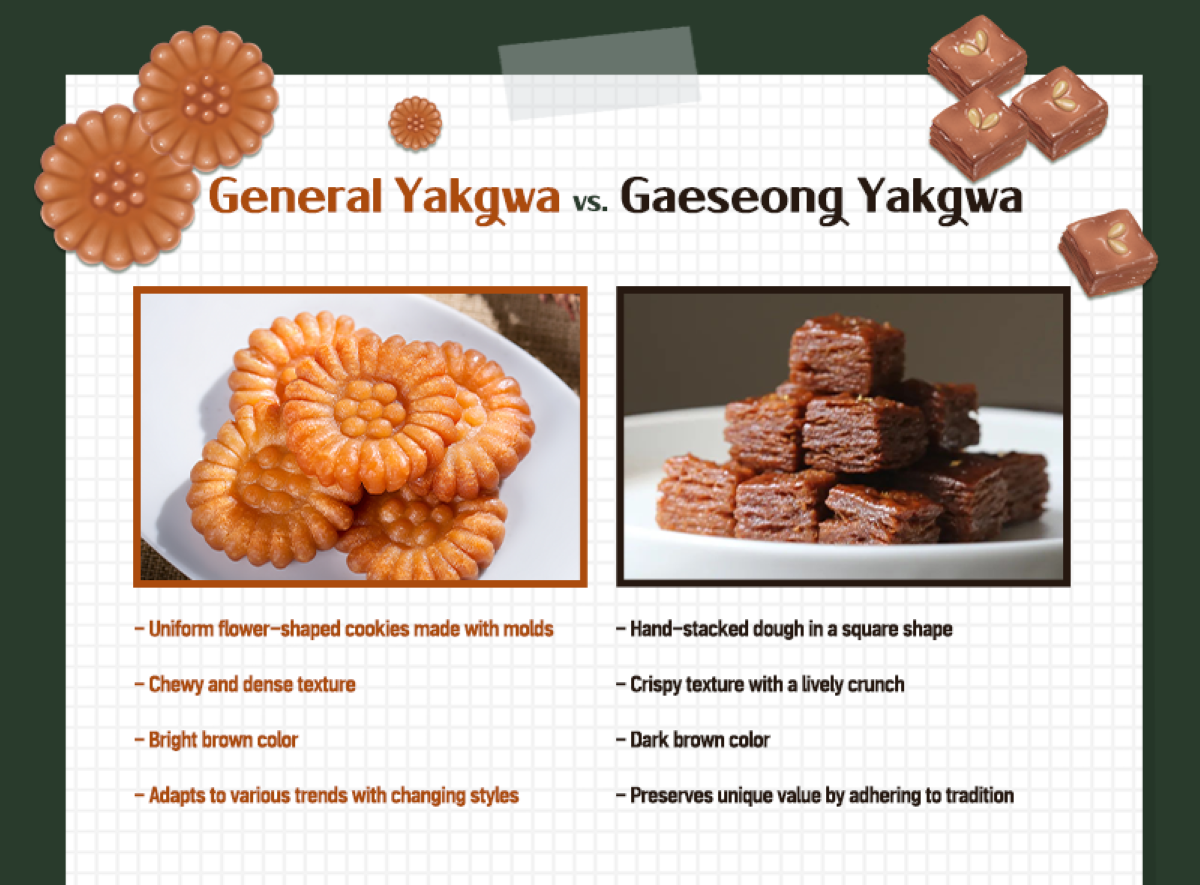
CEO Kim considers leisure and happiness as the two important values of Korean desserts. That’s because while rice is associated with survival, desserts are not. Korean desserts, in particular, hold even more significance as their process of production isn’t simple. So, slowly savor each dessert served on the soban (small table) and indulge in each dessert’s charm as you are destined to be rewarded with a delightfully unforgettable memory.


Globalizing Korean Desserts while Maintaining a Strong Foothold
CEO Kim sometimes feels weary as she started this business relatively late. However, she cannot quit because of her returning customers. Among foreigners, her products are particularly popular among the Japanese such that some even place international orders directly from Japan. In this way, Korean cuisine is naturally being globalized.
The most common response she gets from her customers is "stay healthy." It’s the heartfelt wish of people hoping that she continues her work for a long time. Despite the challenges during the COVID-19 pandemic, she managed to persevere with the support of people. Thanks to this, her establishment has become even more popular among foreigners. So, even without engaging in any special activities but by simply enduring in her position, she is contributing significantly to the globalization of Korean desserts.
And who knows? Before long, the day that people enjoy Gaeseong juak more than macaroons might come knocking on the door. Just as CEO Kim wishes.
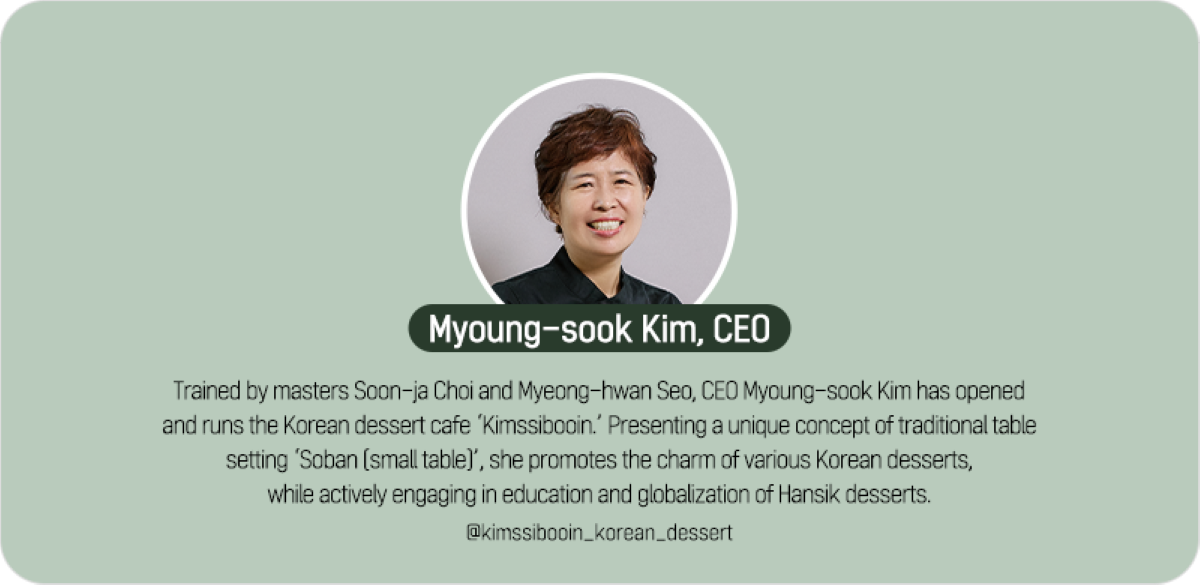

 한국어
한국어
 English
English






